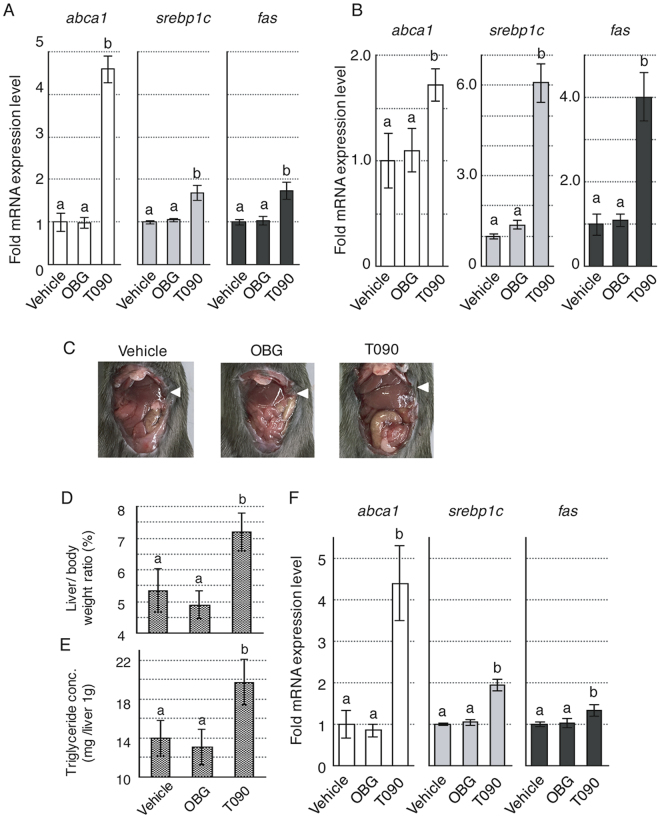Figure 2.
OBG did not cause hepatic steatosis. (A,B) OBG does not up-regulate the mRNA levels of lipogenesis-related genes in the liver. The mRNA levels of abca1, srebp1c and fas in Hepa1–6 cells (A) or HepG2 cells (B) were measured at 48 h after treatment with 10−6 M OBG or 10−6 M T0901317 by qRT-PCR and normalised against gapdh. The fold change in vehicle versus ligand-treated cells is shown. Means ± SD are calculated from triplicate measurements in three independent experiments. Values followed by different letters are statistically different based on ANOVA followed by SNK tests (P < 0.01). (C–E) OBG treatment does not cause the undesirable symptoms of hypertrophic liver. Representative photographs of mouse liver samples after 10 mg/kg OBG or T0901317 treatment are shown. Each liver was indicated by arrow (C). Ratio of liver to body weight (D) and the triglyceride concentration in the liver (E) are depicted. Means ± SD were calculated from biological replicates (vehicle, n = 5; OBG, n = 4; T0901317, n = 4). Values followed by different letters are statistically different based on ANOVA followed by SNK tests (P < 0.01). (F) Effect of OBG on lipogenesis-related gene expression in M-1 cells. Levels of abca1, srebp1c and fas mRNA were determined as described in Fig. 2A.

